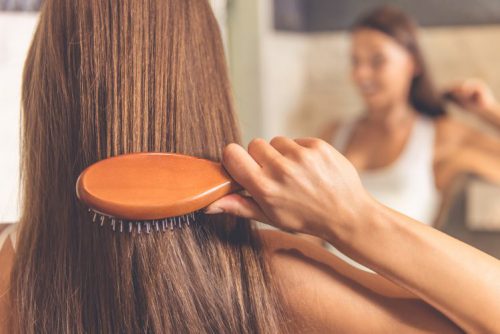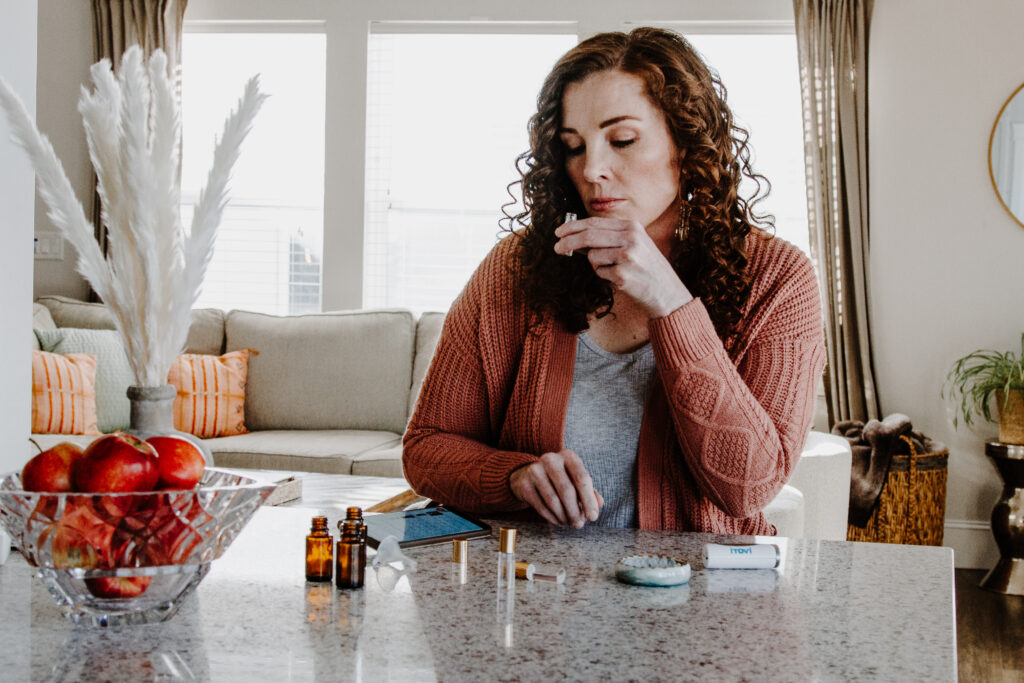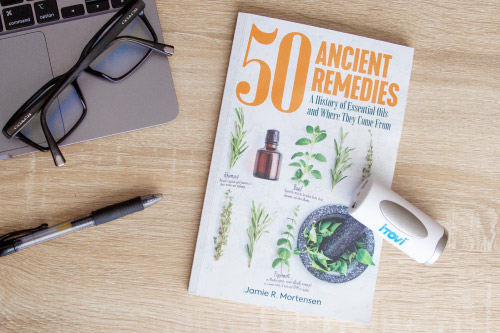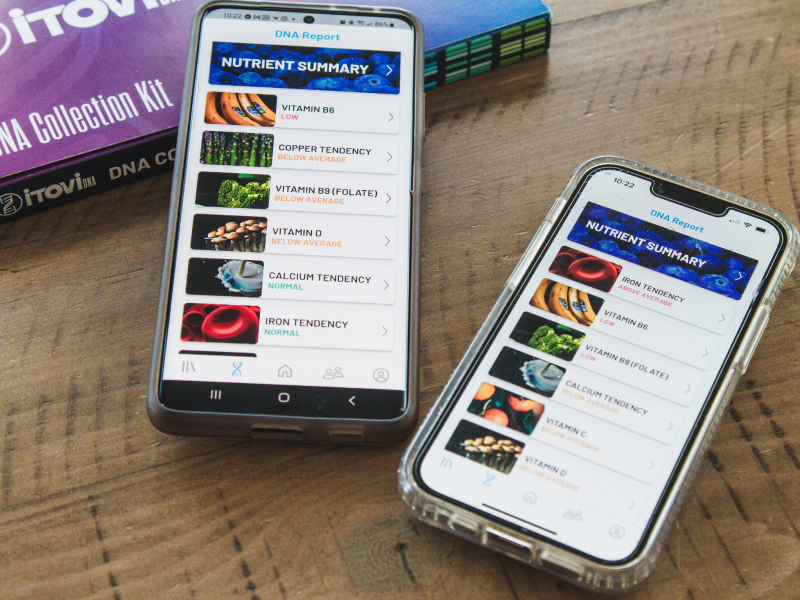
If we were to describe the modern world’s relationship with beauty—we would label it as “it’s complicated.”
Through the cultural upheavals of the last few decades, especially as it regards women and feminine beauty, we’ve got quite the mind-bending conversation on our hands!
Some have come to feel that beauty is just about appearances, that it’s about vanity, “pretty privilege”, shallowness, and in some cases even weakness, manipulativeness, and oppression. Others say beauty is about confidence, integrity, connection, health, and liberation!
So which is it?
Is beauty a physical fact or does it only exist in the “eye of the beholder”? Is beauty something indefinable and abstract or something tangible and concrete that can be built upon? Is beauty blinding or revealing? Is it about how you “look” or how you “feel”?
How much of beauty is about your relationship with yourself OR and how much of it is about your relationships with the outside world, people, and communities? What is the overlap between beauty and identity, “attractiveness”, self intimacy, and social intimacy?
How much value should we place on beauty?
And, perhaps most importantly, what habits help us make beauty a good, positive thing in our lives? And, of course, how can essential oils and the iTOVi Scanner play a part?
We’re here to have that conversation, to get down to the “bones” of beauty and understand how beauty is a part of wellness and a well-lived life!
Attempting to Define Beauty
Usually, when we think about “beauty” we think about “the quality of being visually pleasing”.
But to think of only the visual is a little too narrow. Music can be beautiful. Ideas and actions can be beautiful. Even some systems, by virtue of how well they work, can be called beautiful (the human immune system, for example, could be said to be very beautiful)!!
If, for now, we broaden the definition of beauty to “the quality of being pleasing”. Then we can start to see how “beauty” works in the world.
(We’ll get back to beauty-of-person in a bit. For now, let’s get some philosophical foundations under our feet.)
We find some things “pleasing” because they are true and effective. And possibly nurturing! We all smile at a well-deserved compliment, at the thrill of a correct answer given, at signs of health and vitality (especially in those we love), at the experience of social connection, or at the success of using our knowledge to create something sound.
When the world and the “truth” it brings us are favorable to our survival and our ability to thrive (our wellness), we are likely to see the world as quite a “pleasing” and “beautiful” place!
Then again, when it doesn’t favor us (our desires, our comfort, or our survival) the truth can also be “terrible”, “ugly”, or “frightening”! It’s harder to appreciate the “beauty” of a mountain lion when it is chasing you for dinner! And it may be hard to see the full “beauty” of someone’s musical performance when it threatens your chances at winning the talent show!
The truth is, we find some things “pleasing”, and yes “beautiful”, not because they are necessarily based in anything “true” or ultimately helpful or nourishing, but because they “sit right” with us, give us the experience we want to have, or are convenient to us.
In this way, beauty can be manipulative! A “pleasing” compliment can flatter us, a “pleasing” offer may lead us to make poor choices, or a “pleasing”, easy alternative may cause us to miss out on the “harder but ultimately better” option.
Beauty is powerful. Beauty can teach us about the world and about ourselves. Beauty can champion a truth or disguise a lie. Beauty can inspire us to action, focus us, distract us, soothe us, feed us emotionally, build us up, humble us, and more.
Sometimes “beauty” is used for these purposes intentionally. And sometimes beauty’s influence, for good or bad, is purely accidental—just a consequence of influenceable people walking around in a world full of things that can influence them!
Beauty has the power to save or destroy the world. And since there’s no way to stop humankind from being influenced by beauty, it’s up to us to do what we can to create a wise world that can make beauty a force for truth and goodness.
Beauty & Your Relationship with Your Body
The first knot to untangle when it comes to “beauty” is what it means for your relationship with your body!
Do you appreciate, value, and take care of your body? Do you listen to it? Do you put in an effort to have a good relationship with your body so that, while living in it, you feel safe, energized, confident and happy?
Are you beautiful to yourself? And you make your life beautiful by being connected to all that is life through your body?
No amount of external compliments can replace having a good relationship with your body. To feel beautiful and be healthy, it’s important to listen to your body as you take care of your physical and emotional wellness.
Yes, we’ll talk about the social aspect of beauty later. But, for now, focus on you!
The Biology of Feeling Beautiful
Feeling “beautiful” is not just about the surface of your physical body! Physically, beauty is very much an “inside out” process!
Ultimately, your skin, hair, face, and posture are all meant to reflect what is going on inside! Healthy organs, healthy blood flow, nerve function, hormone balance, etc all contribute to healthy, glowing skin and a more vibrant (some might say youthful) personal energy and appearance!
Though this mechanism is imperfect (and sometimes interfered with by social biases)—our brains are designed to recognize and value signs of physical health in ourselves and others.
And, when it comes to you and your experience of feeling good and feeling beautiful, some of those “signs of physical health” come from the inside as well as from the outside!
Feeling beautiful isn’t just about what you see in the mirror. It’s about the comfort, energy, and pleasure you feel in your own body and the connectedness you feel to it!
It’s about how you handle stress in your day-to-day life—whether you manage your stress well so it helps you to blossom or mismanage your stress and allow it to sabotage your well-being.
Embrace Your Body
If you struggle with your relationship with your body and feeling beautiful, the first step may be to stop comparing your body to the bodies of other people.
Your body is your home. And you don’t make your home a more comfortable, vibrant, and beautiful place to live in by keeping your mind focused on the “homes” of others!
If you struggle with loving, accepting, and connecting to your body, and especially if you find yourself mentally criticizing your body’s appearance, then start practicing appreciation for your body!
Find ways to celebrate your body! Make an effort to recognize and express gratitude for all that your body does for you!
You may choose to learn about your body and its wonderful workings! (See the next section on physical wellness.) Or you may choose to become more emotionally “one” with your body through healthy emotional wellness practices (see later section on emotional wellness).
You can also use regular iTOVi scans or meditations (like mindfulness, chakra, body scan, or loving kindness meditations, descriptions of these meditation are included at the end of this blogpost) to help you get in tune with and appreciate your body.
Physical Wellness
A big part of your relationship with your body is learning how to take care of it physically! This involves giving your body what it needs (adequate sleep, nutrition, hydration, exercise, and social connection). As well as learning how not to push your body too hard.
For guidance in shoring up your basic wellness habits, try:
- The iTOVi Sleep Guide
- The iTOVi Nutrition Guide
- See part 3 for tips on food-related body shame and eating disorders
- The iTOVi Hydration Guide
- (more guides to come!)
And, to refine and personalize your physical wellness plan even further, you can use your iTOVi Scanner! Scan yourself regularly and look out for products that come up repeatedly! Also, take note of your body systems wheel, and categories that repeatedly get filled up in your wheels, and when.
(Author’s tip: By scanning regularly, I found that, for me, the “Brain” section of the body system wheel in my reports very often “fills up” when I scan myself after lunch. This has taught me to take better care of my brain during my lunch breaks. I feel much more “at home” in my body and beautiful when my brain is working right!)
Find guides to each of the iTOVi Body Systems (brain, respiratory, immune, etc) on our blog!
Emotional Wellness
It’s hard, nearly impossible, to have a good relationship with your body if you can’t play a good host to the emotions that arise in that body!
There are many skills required for emotional wellness, but here are some of the basics:
- The ability to recognize our negative emotional states (stress awareness)
- The ability to soothe our negative emotions (stress management)
- The ability to healthily process and learn from our negative and complicated emotions
- The ability to reasonably pursue positive emotions, through both basic pleasures and challenging but fulfilling work
- The ability to savor, celebrate, and remember positive experiences and emotions
Regular self check ins (with iTOVi Scans, journaling, meditations, conversations with friends, etc) can help us adapt to our current emotional needs and develop these emotional wellness skills.
You’ll be amazed at how beautiful you feel when your emotional wellness is on the up and up!
Also, especially for ladies, it can be enormously helpful for your physical health, emotional health, your relationship with your body, and your body expectations to live in tune with your body’s natural hormone cycle!
What’s next?
Feeling healthy and connected to your body is enormously important. It’s the foundation of your beauty. But once the foundation is laid—there is more to explore and build!
There’s how you dress and express yourself, there are the beauty routines you choose to adopt, there’s how you interact with other people and the pursuit of social intimacy and love…
There’s lots more to be said about what beauty is and how it works!
So, we’ll see you in part 2!
Mindfulness Meditation (10-20 min) |
Directions.
Select a quiet, private place to meditate. Remove distracting stimuli as best you can and set up any aromatherapy, music, candles, or other helpful sensory cues you want to use to enhance your meditation. Set a timer for the amount of time you want to spend in focused, unbroken meditation. Sit in an upright, comfortable meditation position. Close your eyes or simply let your gaze fall and rest on a point ahead of you. Breathe in, slowly and deeply, through your nose, hold for a moment, then let the air slowly out of your mouth. Continue to breathe this way, making sure to stay present with your body, its interoceptive sensations, and the rise and fall of each breath. Any thoughts or external sensory disruptions that come (i.e. a sound from outside, a gust of air, etc), notice them, and then gently return your attention back to your breath. How Does This Support Me? Mindfulness Meditation stimulates the vagus nerve, reduces stress, and increases alpha brain waves—which are tied to awareness, creativity, and better emotional, physical, and mental health. |
Loving Kindness Meditation (5-20 min.) |
Directions
Select a quiet, private place to meditate. Remove distracting stimuli as best you can and set up any aromatherapy, music, candles, or other helpful sensory cues you want to use to enhance your meditation. Set a timer for the amount of time you want to spend in focused, unbroken meditation. Sit in an upright, comfortable meditation position. Close your eyes or simply let your gaze fall and rest on a point ahead of you. Breathe in, slowly and deeply, through your nose, hold for a moment, then let the air slowly out of your mouth. As you continue to breathe this way, focus on feelings of loving kindness. Start by sending feelings of loving kindness to yourself and your body. When you’re ready, shift your attention outwards, towards particular people, places, and things. Send feelings of loving kindness to them. You may choose to visualize your target and/or use mantras such as: “May I be happy, May I be safe, May I be healthy, peaceful, and strong”. If your thoughts wander, gracefully acknowledge them and then let them go, gently redirecting your attention back to loving kindness. Persist in the meditation even if you feel awkward, undeserving, or otherwise blocked. It will become easier with time. How Does This Support Me? This activity promotes emotional self-connection, expression, and reflection. It can help reduce anxiety, bolster self-esteem, and help us to take a step back and both express more and perceive more love in our lives. |
Body Scan Meditation (10 min.) |
Directions
Set a timer for the amount of time you want to spend in focused, unbroken meditation. Find a quiet place where you can lie down comfortably and not be disturbed. Lie down on your back with your legs straight and arms to the sides. Try to release any tension you are holding in your body. Then, starting at your feet, turn your attention to one part of your body at a time. Take a few seconds to mentally “be” with each body part, feeling any tension it is holding and then relaxing that body part. Then move on to the next part of your body, moving your consciousness slowly upwards towards your head. Once finished, take 1-5 minutes to lie still and try to be present with your entire, now-relaxed body. You may wish to get a drink of water before returning to your normal activities. For beginners, try using this order: Left foot, left ankle, left calf, left knee, left thigh, left buttock, right foot, right ankle, right calf, right knee, right thigh, right buttock, pelvis, abdomen/stomach, spine, ribcage, heart, collar bones/upper chest, right hand, right wrist, right forearm, right elbow, right upper arm, right shoulder, left hand, left wrist, left, forward, left elbow, left upper arm, left shoulder, neck, jaw, face, left side of the head, right side of the head, back of the head, top of the head. How Does This Support Me? This meditation reduces stress and encourages feelings of groundedness and safety. Additionally, this meditation increases bodily/interoceptive awareness which assists in emotional processing. , |
Chakra Meditation (10-20 min.) |
Directions
Select a quiet, private place to meditate. Remove distracting stimuli as best you can and set up any aromatherapy, music, candles, or other helpful sensory cues you want to use to enhance your meditation. Set a timer for the amount of time you want to spend in focused, unbroken meditation. Sit in an upright, comfortable meditation position. Close your eyes or simply let your gaze fall and rest on a point ahead of you. Breathe in, slowly and deeply, through your nose, hold for a moment, then let the air slowly out of your mouth. Continue to breathe this way, making sure to stay present with your body, its interoceptive sensations, and the rise and fall of each breath. When you feel ready, focus on one chakra at a time, beginning either at the root chakra or the crown chakra and working your way vertically through them in order. You may choose to think about “unblocking”, cleansing, or otherwise relaxing your chakras one by one so that energy flows through them like a river. You may choose to visualize light coming into and feeding your chakras or you can visualize energy radiating out of them. Or you can simply ponder the associations of each chakra and how those ideas are present in your life. Traditionally, the chakras are: 1) The Crown Chakra; located at the crown of the head Associated with divine connection (to either deity or the universe) 2) The Third Eye Chakra; located between the physical eyes Associated with intuition, self-reflection, wisdom, and consciousness 3) The Throat Chakra; located in the throat Associated with self-expression, creativity, communication, and personal truth 4) The Heart Chakra; located in the heart Associated with love, compassion, empathy, and forgiveness 5) The Solar Plexus Chakra; located in the abdomen, above the belly button Associated with inner strength, gut instinct, personality, identity, choice, and personal freedom. 6) The Sacral Chakra; located in the lower abdomen, below the belly button Associated with emotions, willpower, sexuality, and creativity 7) The Root Chakra; located at the base of the spine/pelvic floor Associated with safety, health, vitality, and basic needs How Does This Support Me? Chakra meditation supports emotional and interoceptive self-awareness, reduces stress, supports mental acuity and positivity, increases energy, improves sleep, and more. |




